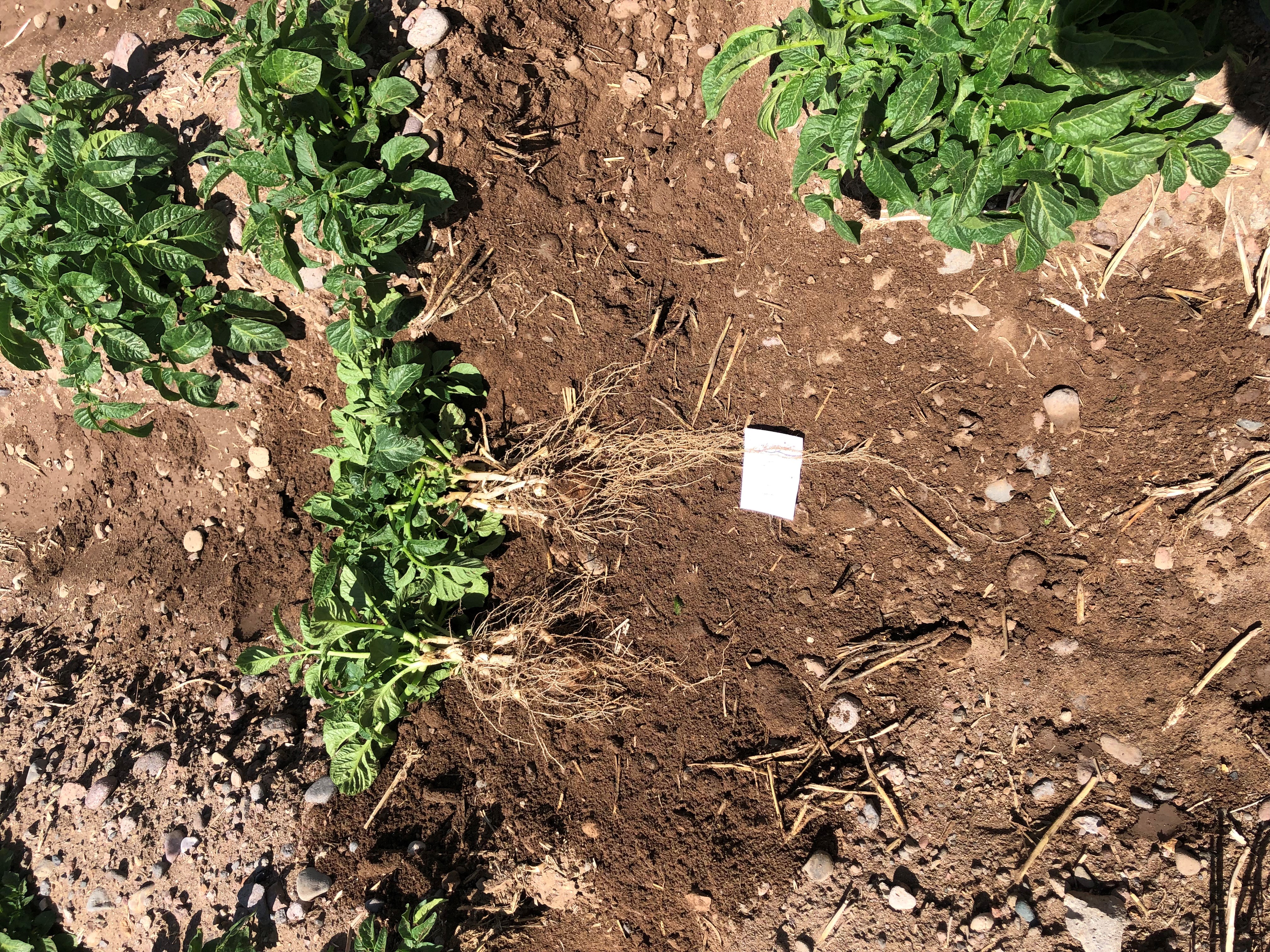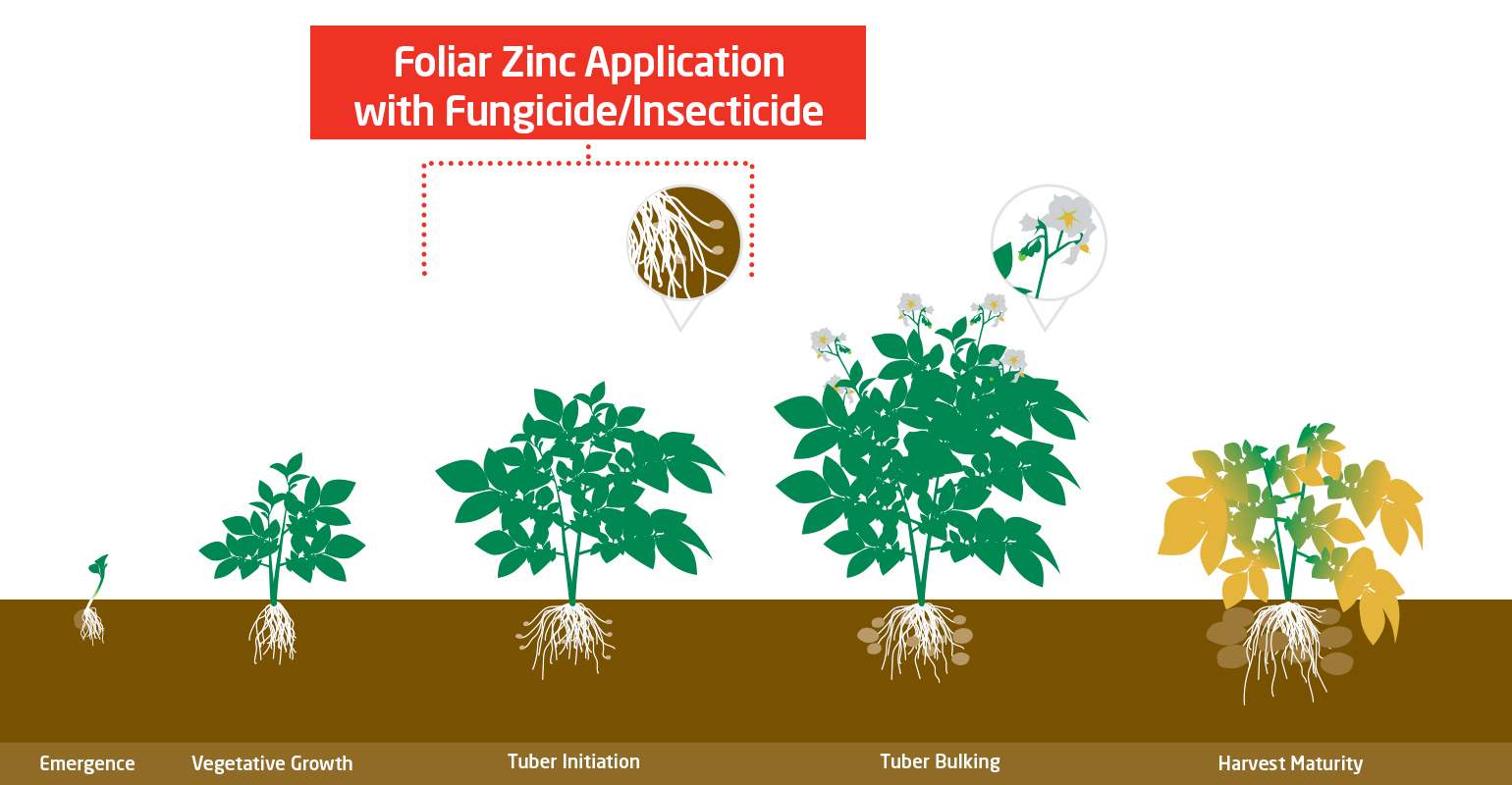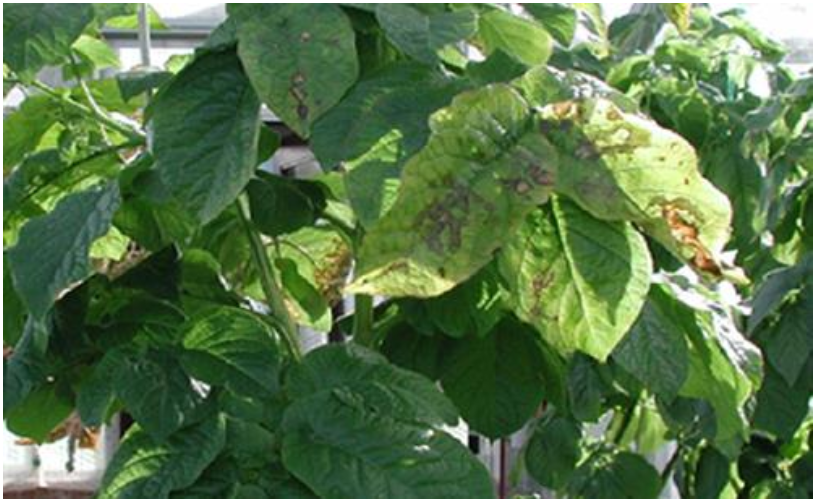Considerations for Zinc Applications to Potatoes
April 07, 2020
Agronomics
Zinc (Zn) fertilization becomes increasingly important for potatoes in high yield situations. Potatoes are highly responsive to zinc, due in part to the high amount of phosphorous fertilizer potato farmers apply at planting as phosphorus interferes with the plant's metabolism of Zn causing the deficiency. Phosphorous and Zinc are very important in early growth of potatoes, particularly when soil temperatures are low. Zinc plays a key role in chlorophyll production, carbohydrate metabolism and cell elongation, which impacts leaf size.
Most potato growers collect petiole samples weekly. This ensures nutrient levels in the potato plants are at optimal levels to achieve the yield goals. Sufficient zinc levels in potato petiole tissue should be 20 ppm to 70 ppm. When tissue test levels drop below 15 ppm, yields will be reduced.
Conditions Leading to Zinc (Zn) Deficiencies
Low soil Zn levels can occur in soils with low organic matter. Most potatoes are grown on sandy soils, which have low organic matter. Many times the previous crops have mined the Zn from the soil making zinc the most common micronutrient deficiency in potatoes. In soils with high pH Zinc can be made unavailable to the plants.

Improved potatoes roots treated with BRANDT EnzUp Zn. Photo by Brad Walker
Key Application Timing and Rates
Zinc is not mobile in the soil, so roots have to go to where the Zn is. To ensure Zn is available to the potato plant for early growth Zn must be applied in a fertilizer band near the tuber pieces. BRANDT has an excellent product for this; BRANDT® Sequestar® 9% Zn. This is a fully EDTA-chelated solution that can be applied in-furrow or a 2X2 band at planting. Chelation allows the Zinc to remain in the available form (Zn2+) throughout the growing season and prevents the formation of Zinc hydroxide in high pH soils. In addition BRANDT Sequestar 9% Zn has superior tank mix compatibility and will perform in complex tank mix situations, such as neutralized orthophosphate solutions.
Zinc can also be applied as a foliar spray and absorbed by the potato leaves. In addition, BRANDT’s foliar Zn products can be tank mixed with insecticides and fungicides. The ability to get Zn into the leaves and the mobility of Zn in the plant should be considered when selecting a foliar-applied zinc product. While Zn2+ is the form roots take up zinc. When Zn2+ is applied to leaves it can burn the leaf and most of it does not enter the leaf. In addition it does not move or translocate through the plant well. BRANDT has overcome these obstacles with our sugar alcohol delivery system. This technology is in both our BRANDT® Smart System® products and our BRANDT® Manni-Plex® products. Both increase leaf absorption and increase zinc mobility within the plant.
For organic growers we have BRANDT® Organiplex® 6% Zn. It is an OMRI certified fertilizer, derived from zinc amino acid complex. It has great leaf absorption and good zinc mobility within the plant.
Key Foliar Products
| Product | Rate | Mobility |
| BRANDT Smart B Mo | 1 to 4 pts/acre | Excellent Foliar Mobility |
| BRANDT Smart B | 1 to 4 pts/acre | Excellent Foliar Mobility |
| BRANDT Smart K B | 1 to 4 qts/acre | Excellent Foliar Mobility – Best V10 product as it includes K2O |
| BRANDT Manni-Plex Moly B | 1 to 4 qts/acre | Good Foliar Mobility |
| BRANDT 10% B | 1 to 4 qts/acre | Lower Foliar Mobility, Higher Application Rate |
| BRANDT Smart Trio® | 1 to 2 qts/acre | Good Foliar Mobility plus Zn and Mn |

Zinc Deficiency Picture

Symptoms of zinc deficiency. Youngers leaves show interveinal chlorosis neurosis that occur in irregular patterns. Leaves are small and plants are stunted with zinc deficiency.
Photo by Yara
